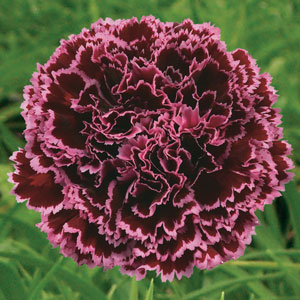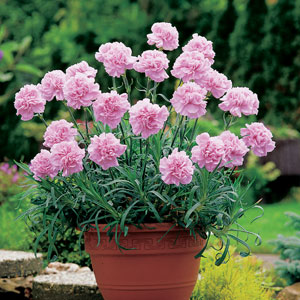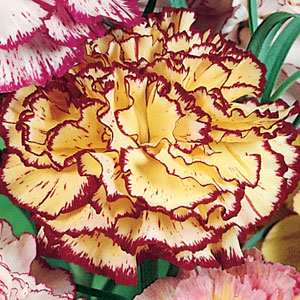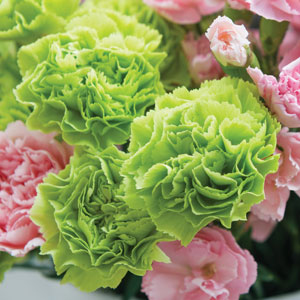Carnation Growing Guide

What is Carnation?
Carnation (Dianthus caryophyllus) is a herbaceous perennial. It is part of the Caryophyllaceae family and is native to Southern Europe to India. Carnation are evergreen with a clump forming habit that has grey green foliage. They flower during Spring into Summer. The flowers are loosely tufted and come in the colours of red, pink, mauve, yellow or white that are perfumed. Carnation prefer a full sun position in the garden that has a well drained soil. In warmer climates it is a good idea to protect them from the hot afternoon sun.
Benefits of Growing Carnation
Carnation are very easy to grow. They are ideal for cottage gardens, flowers beds, edging or growing in pots. They are a traditional favourite as cut flowers, Carnation have long stems and they produce long lasting clove scented flowers. Carnation will attract butterflies to your garden.
How to Grow Carnation
Climatic Zones
Cool to tropical.
Plant Size
Taller Varieties Height: 80cm, Width: 40cm
Small Varieties Height: 30-40cm, Width: 25-35cm
When To Plant Carnation
Plant anytime.
Soil Preparation
They grow well in most soil types, but they need soil that is well draining. To get the best blooms a soil that is moist, humus-rich and slightly alkaline is best. Enrich the soil with compost or manure and a handful of blood and bone or complete fertiliser. Avoid heavy soils and water logging, especially in Winter.
How To Plant Carnation
Plant in full sun, with the plant crown at soil level. Spacing sizes depends on the variety.
Carnation Plant Care
Keep watered during main growth periods as they like a moist soil. Do not over water.
Apply a general purpose fertiliser annually in early Spring.
Deadhead promptly to encourage further flushes of flowers.
Cut back to half in Autumn, after the flowering has finished.
Watch out for snails, slugs, aphids and thrip.










